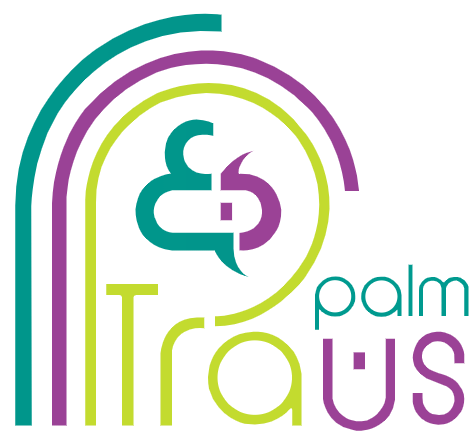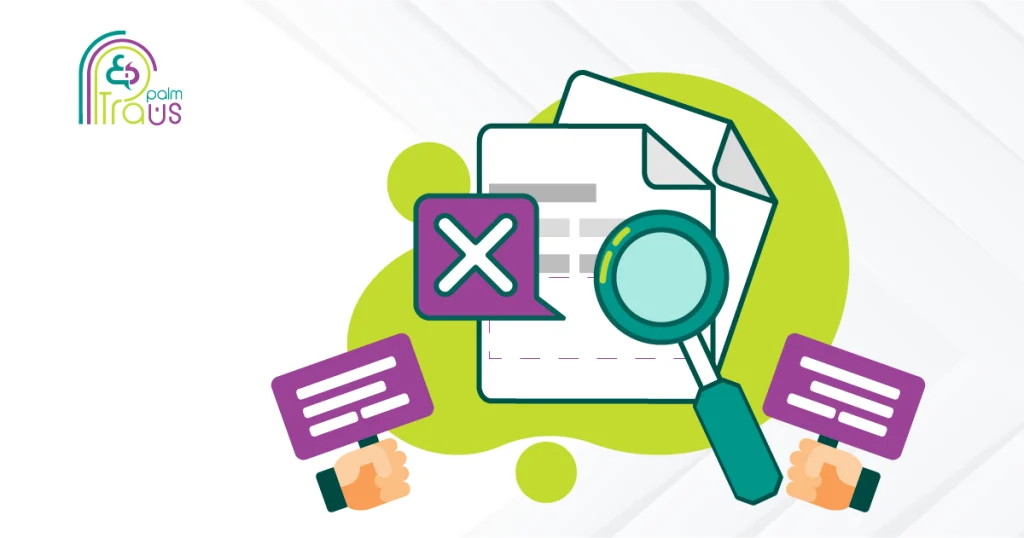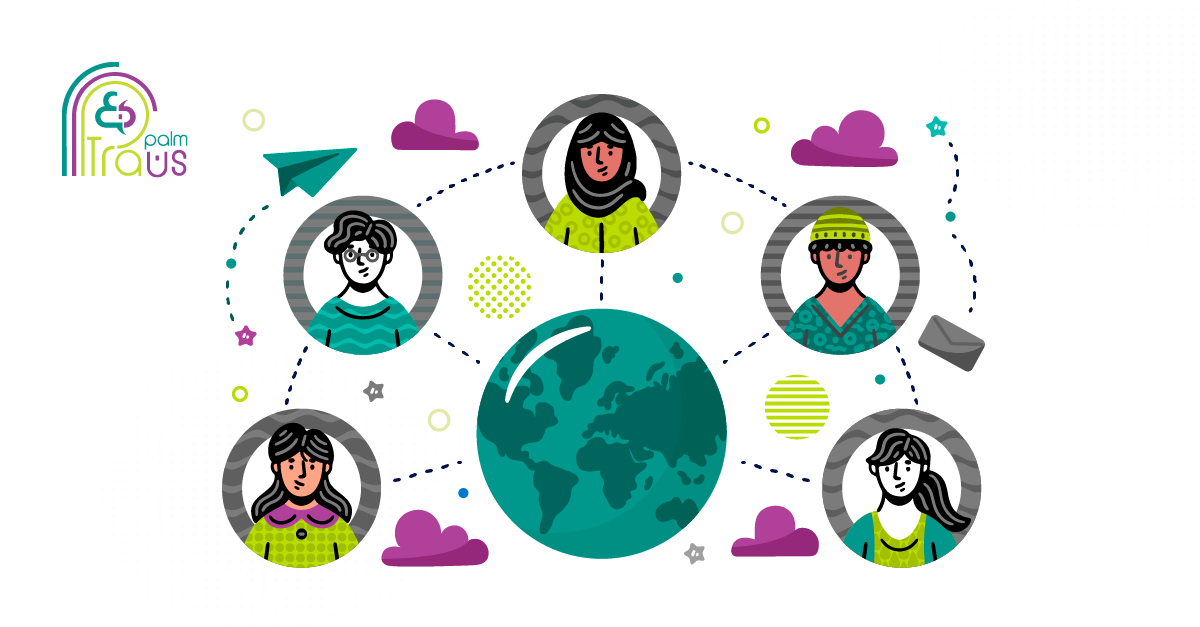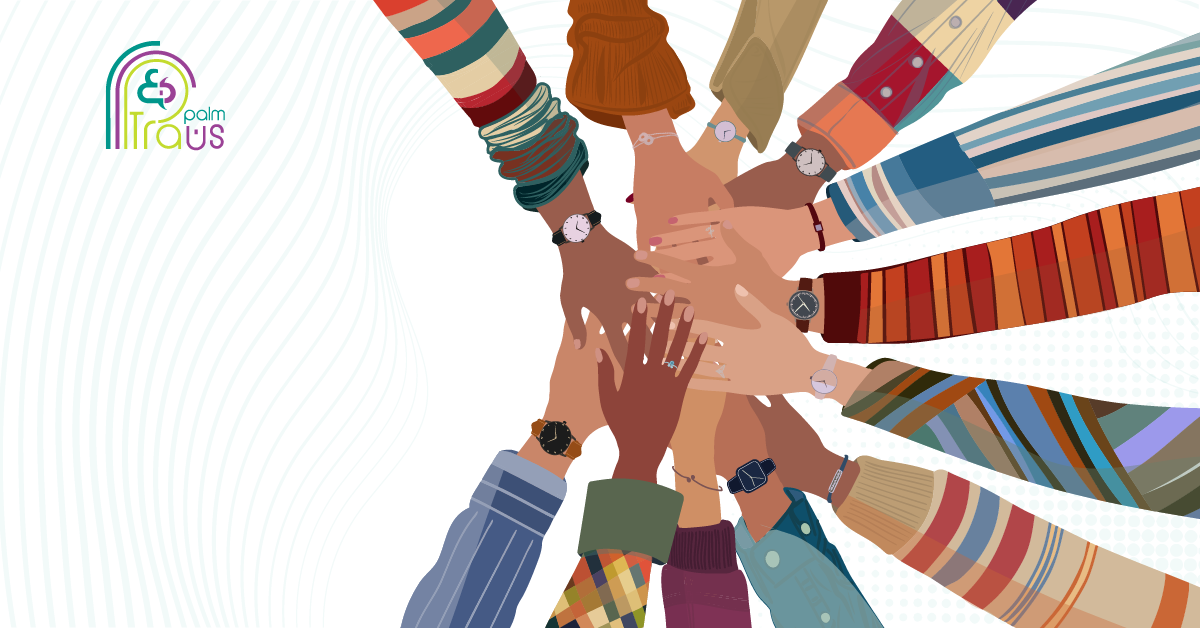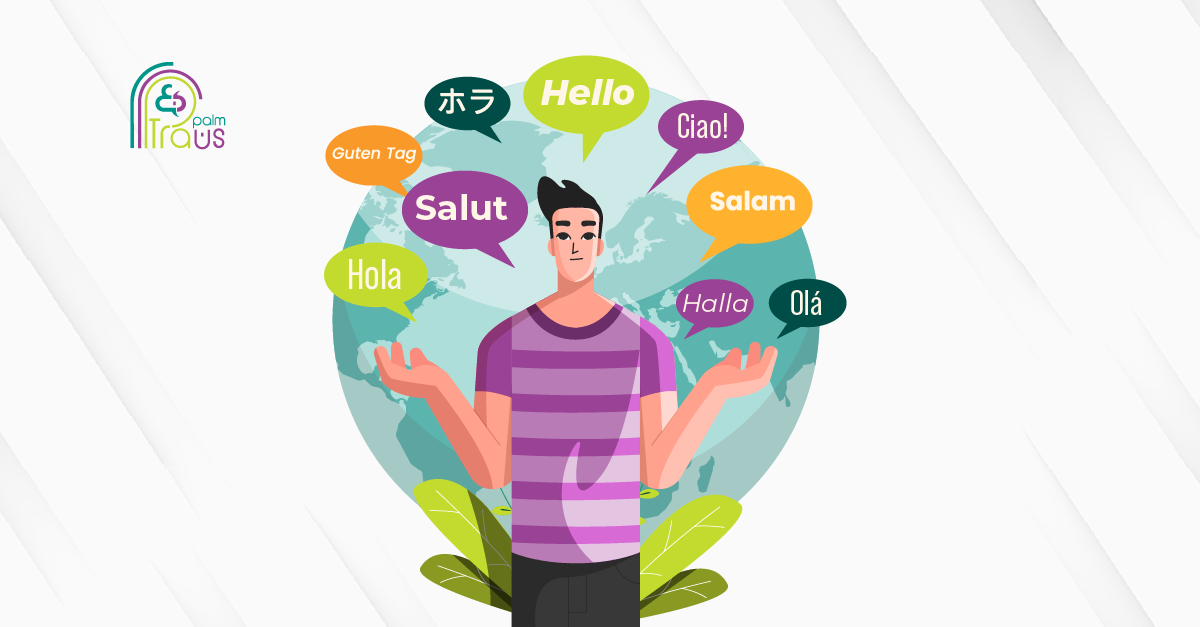One translation error can cost more than just a few dollars in today’s global marketplace; it can harm your brand, reputation, and bottom line. Have you ever thought about the consequences of a bad translation?
Even minor mistakes can negatively impact credibility and communicate wrong messages to your target audience.
In this blog, we will explore common translation errors, share real-life examples from popular brands, and provide practical advice to prevent translation mistakes.
Keep reading to find out!
8 Common Types of Translation Mistakes
1- Literal Translations
Ever heard the phrase “don’t take it too literally”? Well, when it comes to professional translation, that is a piece of advice to keep in mind. One of the most common translation mistakes is translating a word or phrase literally.
Languages have different slang, idioms, and expressions. Sure, it sounds simple, but word-for-word translation often results in awkward, unnatural, or even bad translations. Therefore, it is important to convey the meaning, not just words.
2- Cultural Misunderstandings
Language and culture are two peas in a pod. Understanding cultural nuances is as important as the linguistic aspect.
A word or phrase that is perfectly acceptable in one culture could be offensive or unsuitable in another, along with social norms and cultural traditions as well.
3- Grammatical and Syntactical Errors
Each language has its own grammatical rules, there is no way around it. Variations in grammar and syntax often arise when you impose one language’s rules onto another that may not align with it.
As a result, these mismatches can cause incorrect translations and make your content appear unprofessional.
4- Inconsistent Terminology
Reading a manual where the same term changes from one page to the next can be confusing, right? Consistency comes into play here, especially for technical or specialized documents.
Inconsistent industry-specific terminology can damage the credibility of your brand and create a real mess in your content.
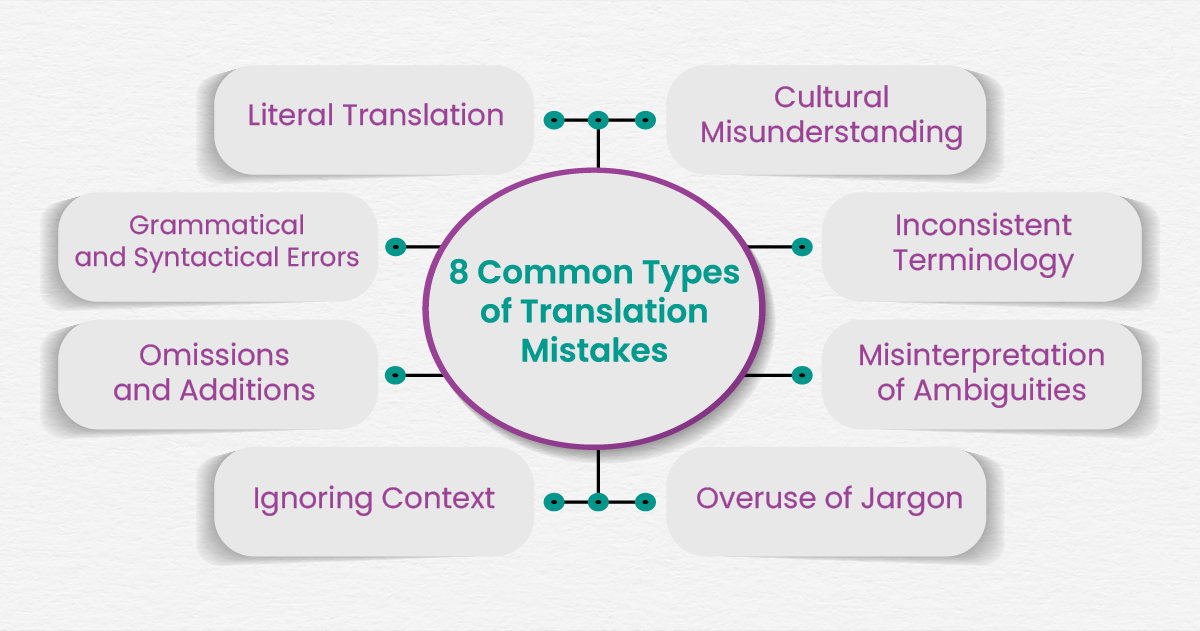
5- Omissions and Additions
The inclusion or exclusion of detail matters more than you think. One of the most common translation mistakes is the omission and addition of words that can entirely alter the meaning.
Even a minor slip can change the tone and intent behind the message that you want to convey to your target audience.
6- Misinterpretation of Ambiguities
The real nightmare for a translator is ambiguity in the source text. How can a linguist deliver accurate translations when the original text is vague and difficult to understand?
Without clear context, this can lead to misinterpretations and translation errors that may distort the whole message.
7- Ignoring Context
There is no doubt that context is king in translation. Overlooking to comprehend the surrounding information or paragraphs is a shortcut to translation mistakes. Without the correct context, the overall message of your content may be lost.
8- Overuse of Jargon
Keep it simple, keep it clear. Sometimes, excessive use of jargon can be perplexing and incomprehensible to the general audience who is unfamiliar with these specialized terms or expressions.
They are often specific to a particular group, industry, and profession. For example, medical, legal, or IT terms can be understood by experts in those fields.
The Risk of Bad Translations: What You Need to Know
Damage to Brand Reputation
Just like in life, first impressions matter in the business world. A brand’s image is the most fundamental element of its business strategy.
Then, how do bad translations negatively impact a company’s reputation?
The answer lies in customers perceiving translation errors as a sign of disrespect and carelessness.
Consequently, it results in negative reviews, social media backlash, and eventually lost business.
Lost Sales and Revenue
Translation mistakes don’t just harm your business image, but they can also drive potential customers to leave their shopping carts and click away from the website.
Your translation can make or break your ability to increase sales or close deals in international markets.
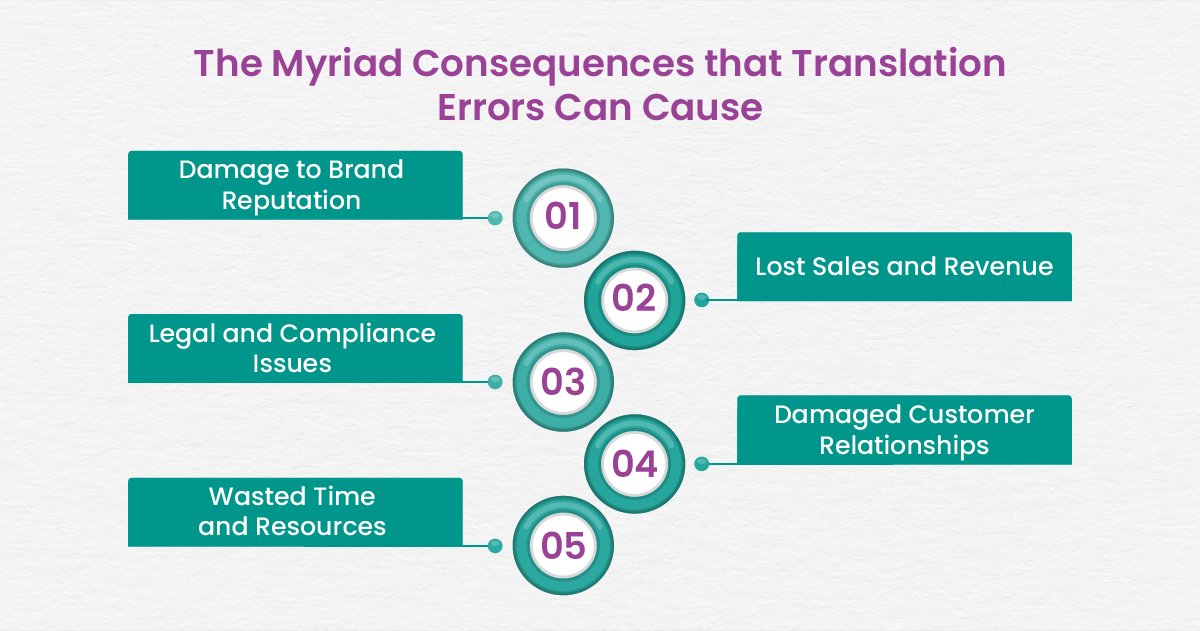
Legal and Compliance Issues
Do you think translation errors could drag you into legal liabilities? Absolutely.
A mistake in translating any sensitive materials like legal, financial, medical, and other highly critical documents can have serious consequences.
In other words, it is putting providers at risk for hefty fines and lawsuits, especially if translation fails to adhere to regulatory standards.
Damaged Customer Relationships
Bad translations can result in lost customer loyalty and damaged relationships. When people visit a website, they first judge its look, feel, and, of course, the words.
Webpages with poor grammar, spelling mistakes, clumsy wording, and incorrect translation lead to a less-than-appealing experience for the user, driving potential customers towards competitors.
Wasted Time and Resources
The process of fixing translation errors is not just an inconvenience; it is time-consuming and drains resources by diverting attention from other critical tasks.
This frequently results in higher operating costs, delayed projects, and potential disruptions to your business workflow, even more than you think.
How to Avoid Translation Errors
Now that you understand the repercussions that incorrect translation can cause, what can you do to prevent errors?
Every problem has a solution. The best thing you can do to avoid translation mistakes is to invest in a professional translation services agency. Here are 6 key reasons:
1- Subject Matter Expertise
A specialized language services provider hires qualified translators who are native speakers of the target language.
These experts have deep linguistic skills and cultural nuances, delivering high-quality translations to ensure accuracy and consistency across various industries.
2- Clear Source Materials
The clearer the source text, the less room there is for error. Ensure that all your materials are clear, well-written, and unambiguous to help translators fully understand the context and achieve a perfect-quality translation.
3- Usage of Efficient Translation Tools
A professional translation provider leverages advanced technology and translation tools to streamline the process.
While machine translation post editing, translation memory, translation management system, and quality assurance software can speed up the process, they should never replace human expertise.
Subject expert translators combine cutting-edge tools with their experience to balance quality and cultural relevance.
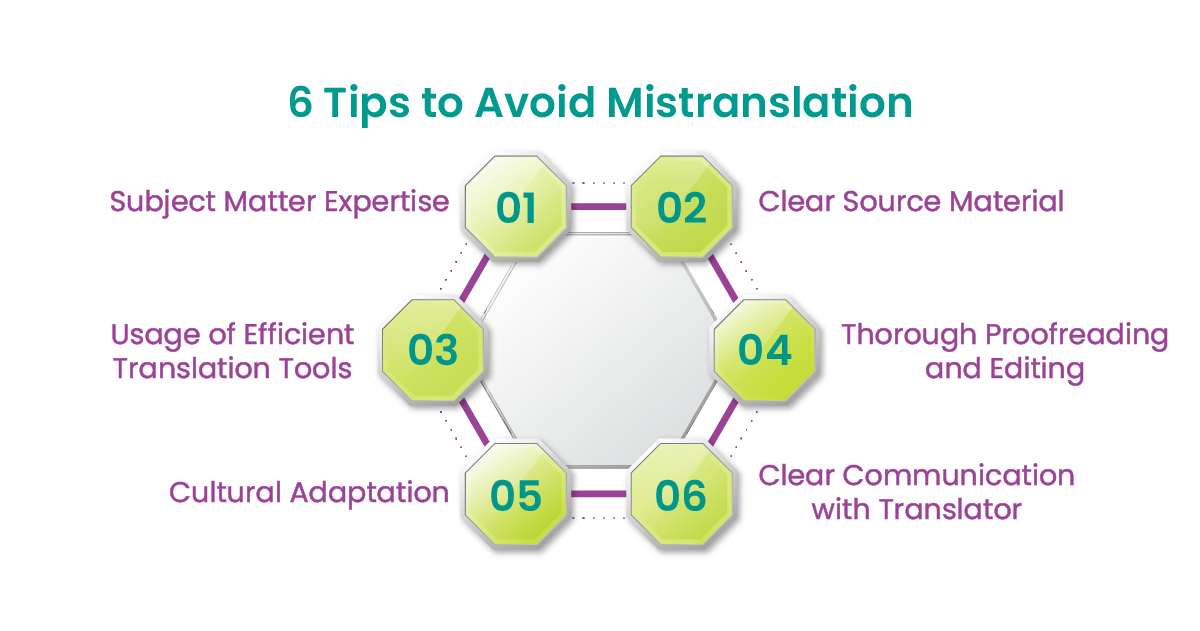
4- Proofreading and Editing
Two heads are better than one. Once the translation is completed, a second set of eyes reviewing the work is not just an added step but an essential part of the process to make sure that the final content is polished and error-free.
5- Cultural Adaptation
One of the important aspects a translation company considers when translating a source text is cultural adaptation.
They ensure that the translation matches the cultural norms and preferences of the target audience.
This is particularly critical for marketing materials, commercials, campaigns, and other forms of content.
6- Clear Communication with Translators
Clear and open communication between customers and translators is critical for preventing misunderstandings.
Clarifying any ambiguities, providing precise criteria, and aligning expectations from the start, both parties guarantee that the finished work meets the desired quality and fulfills customers’ requirements.
Two Hilarious Examples of Translation Errors from Prominent Brands
HSBC’s “Assume Nothing” Campaign
In 2009, HSBC Holdings launched a new campaign with the slogan “Assume Nothing.” But the advertising tagline was mistakenly translated to “Do Nothing” in several non-English-speaking countries.
While this mistake seems small, it caused significant problems when people reacted negatively toward the campaign. In some cultures, the phrase could be perceived as suggesting a lack of trust or respect, or even as being too rude and blunt.
As a result, the bank reportedly forked 10 million dollars to fix the incorrect translation and replaced it with a new slogan: “The World’s Private Bank”.
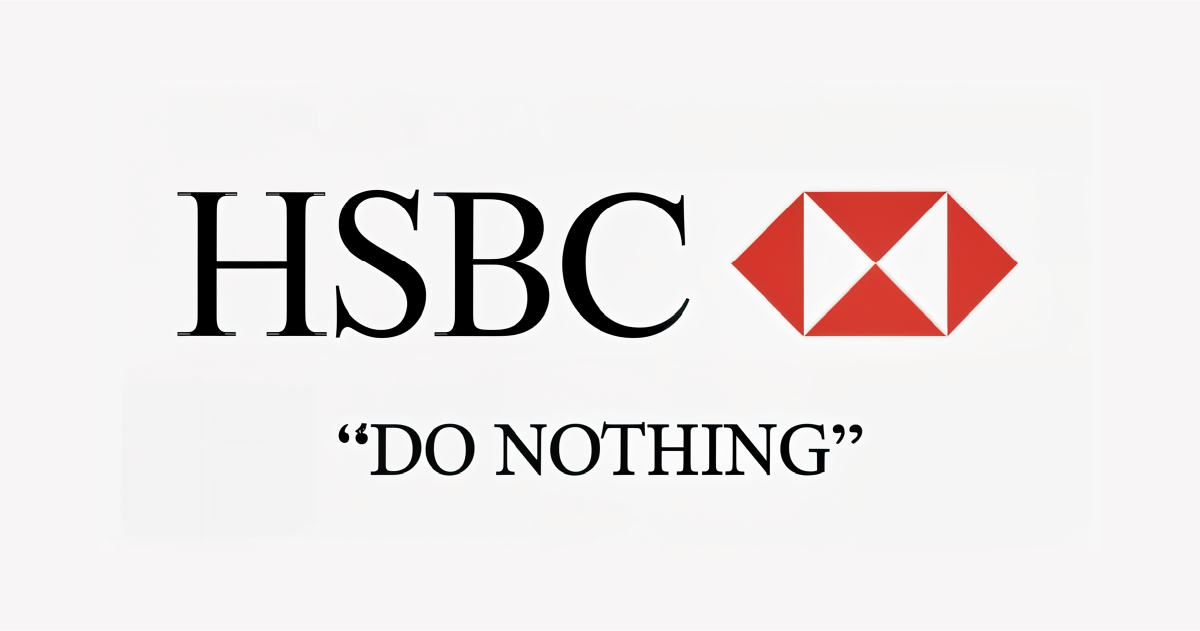
Mercedes-Benz “Rush to Die”
The famous automotive manufacturer Mercedes-Benz also had trouble in China! When entering the Chinese market in 2009, the company’s name was translated into a rather creepy term, “Bensi”, which means “Rush to Die”.
The company unintentionally sparked haste and trouble, rather than invoking visions of quality and luxury. However, Mercedes-Benz quickly took action and rebranded the poorly-translated name to “Benchi,” which means “Run as If Flying,” ensuring linguistic accuracy and cultural sensitivity.

No Room for Mistakes with TransPalm’s Professional Translation Services
Translation errors are a potential disaster for your business. By partnering with TransPalm’s certified translation services company, our team of subject-matter experts takes proactive steps to avoid incorrect translations.
Our linguists bring together language proficiency, cultural understanding, and meticulous attention to detail across more than 120 languages to ensure that translations are not only accurate but also tailored to connect with your audience.
When it comes to translation, don’t cut corners. TransPalm’s Document Translation Services will save you time and money, and protect your reputation in the long run.
